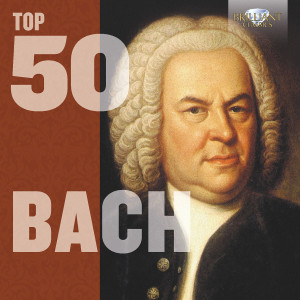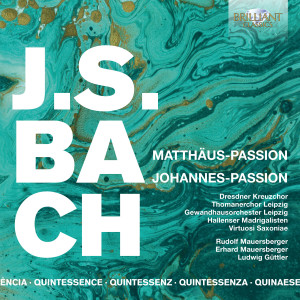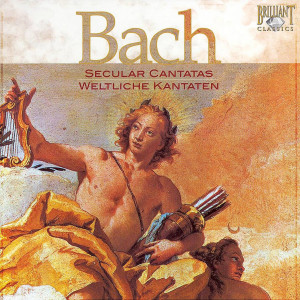

Johann Sebastian Bach (1685-1750) is one of the great composers in Western musical history. He was born in Eisenach, Germany, into a family of working musicians. In 1695, when he was just nine years old, his parents died and he was sent to live with his brother, Johann Christoph, an organist. Whilst living with his brother he learnt the keyboard and studied composition on his own.
He worked as an organist, then as a court composer at Cöthen (now Köthen) and then as musical director at St Thomas’s church in Leipzig, producing many hundreds of choral and instrumental works (and hundreds of thousands of pages of handwritten parts).
Bach married twice and fathered eight surviving children, three of whom became notable composers in their own right. He was a devoutly religious man, and knew tragedy: his first wife died suddenly while he was away on business; 12 of his 20 children died in infancy; one of his sons had severe learning difficulties; and another ran away from home in his teens and died in mysterious circumstances. With employers, who rarely appreciated his talents, he was chippy and argumentative; at a family gathering with a few drinks and a pipe of tobacco, however, he was robustly good-humoured, especially when the Bach clan took turns to improvise rude country songs.
Bach’s style is baroque, characterised by lots of notes, simple motoric rhythms, and steady shifts of underlying harmony – it was derided by some as ‘sewing-machine music’. But he explored harmony much more deeply than other composers of the time: compared to say Handel or Vivaldi, Bach’s music can contain extraordinarily ‘jazzy’ chords and surprising dissonance, and will jump off to many different harmonic areas. It is also ‘absolute music’ – in other words, it often seems to exist apart from any particular instrument, as a constructional idea by itself; consequently the same piece can work as effectively on a piano as a guitar, as a choral work or an orchestral arrangement.
Johann Sebastian Bach’s catalogue of works, listed by their BWV number (from the German ‘Bach-Werke-Verzeichnis’, ‘Bach-work-catalogue’) runs to over a thousand items. Bach’s thousand-plus works enjoyed relatively little appreciation in his lifetime. His music was considered a little old-fashioned for its time, enjoyed only by connoisseurs. The authorities at Leipzig famously complained that they only employed Bach because “the best [Telemann] was not available”. Bach’s main reputation was not as a composer, but as an astoundingly gifted organ player and improviser, and consultant for organ repair. By the 1840s he was largely forgotten except to historians, but Felix Mendelssohn revived Bach’s ‘St Matthew Passion’, and musicians steadily rediscovered his extraordinary body of work.


